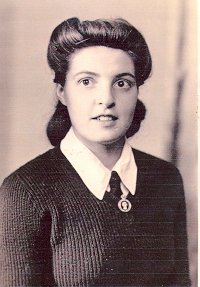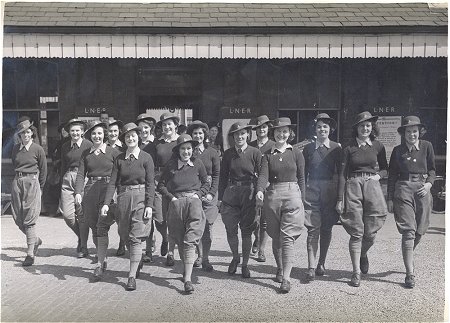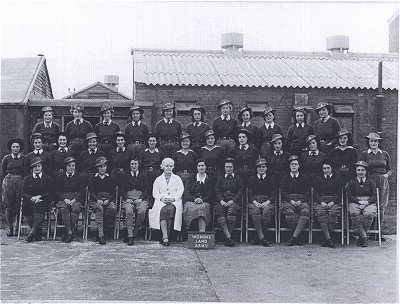Bedfordshire Land Girl Memoir
Bedfordshire Women's Land Army | Land Girl Memoirs
Stella Goldsmith nee Limon
(WLA 69083 : 25 March 1942 30 May 1945)
 Although born in Leeds, Stella
Limon was brought up from the age of four in Luton.
After leaving school in July 1940, she worked as a clerk for the Prudential
Assurance Company locally. Here, in her own words, she recalls her Land Army
experiences:
Although born in Leeds, Stella
Limon was brought up from the age of four in Luton.
After leaving school in July 1940, she worked as a clerk for the Prudential
Assurance Company locally. Here, in her own words, she recalls her Land Army
experiences:
Signing on for national service
Rona Carter and Betty Suttle decided to join the Womens Land Army (WLA) as they were both of an age to have been called up for munitions work or the forces, and the Land Army seemed a better prospect. I was intending to join the Wrens as I was qualified to join by virtue of my maths and chemistry exam results. As I was not old enough to join up then and as I didnt want to be left in the office without my friends I decided to join the Land Army for a year and then transfer to the forces.
When I applied to join the Land Army Dad was not best pleased but being physically fit I was accepted and my uniform arrived. One felt hat and one overcoat, one green pullover, a pair of corduroy breeches, two short sleeved shirts, two pairs of dungarees, two pairs of long khaki socks, a pair of brown leather shoes and a pair of black boots, a red and green armband and a metal Land Army badge. So dressed in my newly acquired finery I set out for Leighton Buzzard. For some reason we were issued with a voucher for the railway hardly the best way to get there.

Leighton Buzzard WLA hostel
We were stationed in a building on the outskirts of the town. A low brick building, T-shaped with the dormitory and ablution block running across the front of the building and the dining room, kitchen and wardens quarters leading back towards the garden planted, all half acre of it, with Brussels sprouts. There were 40 of us new recruits. The dormitory was equipped with bunks made of plywood with a thin mattress on top, sheets, pillow and a couple of army type blankets. There was a single wardrobe between two occupants of the bunk. In the middle of the room were two iron stoves and a scuttle filled with coke. The ablution block had four toilets, four baths and six washbasins. You can imagine the rush after work to try and bag a bath before the water ran out. I shared a bunk with Rona, my colleague from the Prudential. I had the top bunk which to get into you had to climb on the chest of drawers.
It was all pretty basicin the summer you would be kept awake with the sound of earwigs dropping on the floor and in winter the fire buckets kept by the stoves would be frozen solid every morning. The hostel had been built to house Italian prisoners of war but they had to be moved as the conditions didnt meet Geneva Convention requirements.

Stuart Antrobus Historian/Author
Page last updated: 10th March 2014

